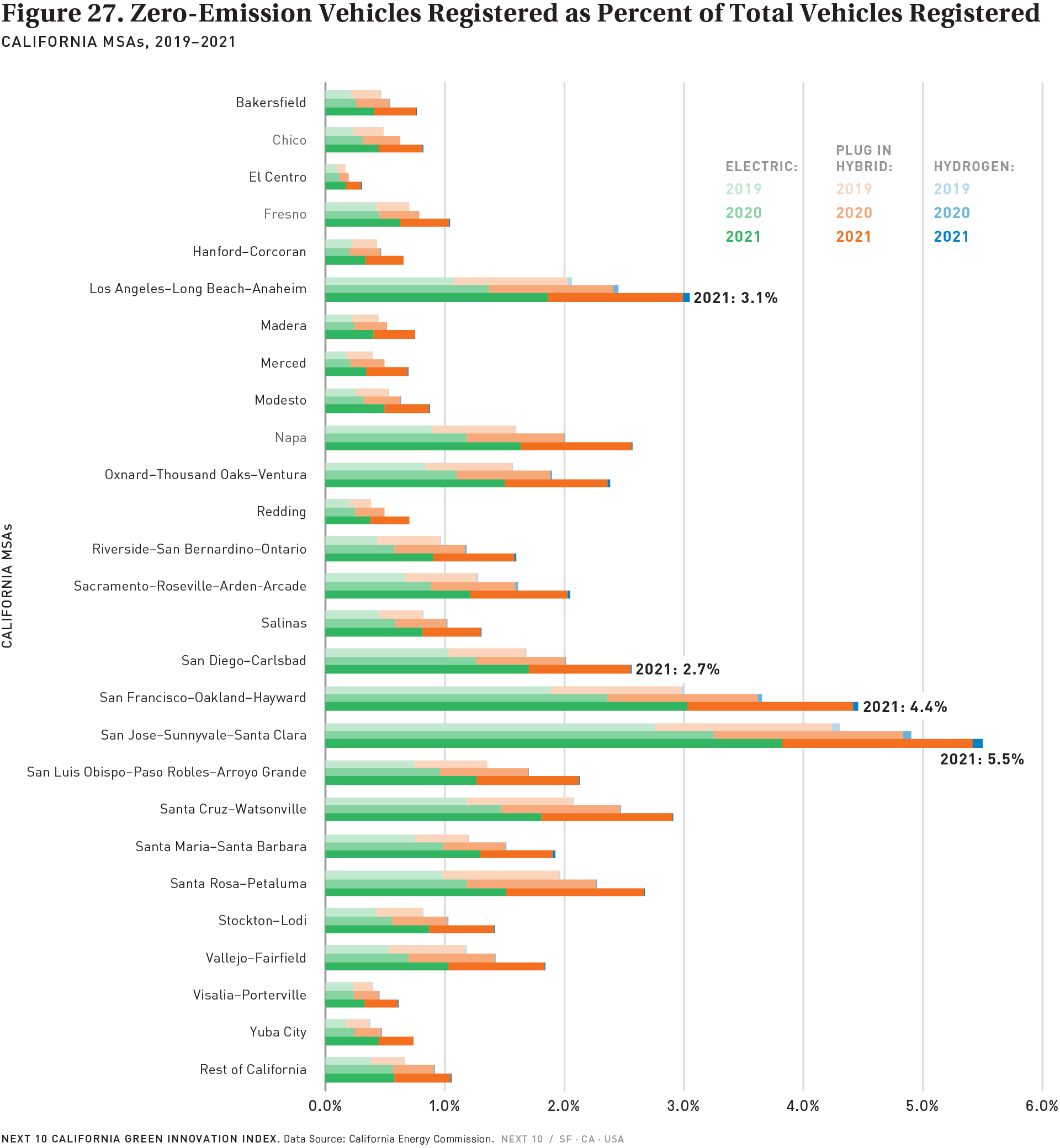Highlight
- The registrations of new ZEVs increased substantially in 2021. However, the share of ZEVs on-road as a percentage of total vehicles registered in large urban areas increased at a similar pace in 2021 compared to 2020. The percentages went up from 5.2 percent in 2020 to 5.5 percent in 2021 in the Sunnyvale-Santa Clara MSA, from 3.8 percent to 4.4 percent in San Francisco-Oakland-Hayward MSA, and from 2.6 percent to 3.1 percent in the Los Angeles-Long Beach-Anaheim MSA. The share of ZEVs in California statewide was almost 3 percent in 2021 (2.8%).
- The share of ZEVs increased faster in 2021 than in 2020 in a few medium-sized MSAs: Napa (from 2.1% to 2.6%), Sacramento--Roseville--Arden-Arcade (from 1.7% to 2.2%), Salinas (from 1.1% to 1.4%), Santa Maria-Santa Barbara (from 1.6% to 2.0%), and Santa Rosa-Petaluma (from 2.4 % to 2.7%). Moreover, non-MSA areas recorded the fastest increase—from 0.7 percent in 2019, to 1.0 percent in 2020, to 1.1 percent in 2021. This is important in terms of the urban-rural divide, as ZEVs are perceived to be predominantly driven in urban areas. It is imperative to consider policies that overcome barriers such as affordability, demand, and charging infrastructures in rural areas. Without these measures, increases in the ZEV market do not necessarily ensure the replacement of ICE vehicles.
More About
Transportation
Related Content

